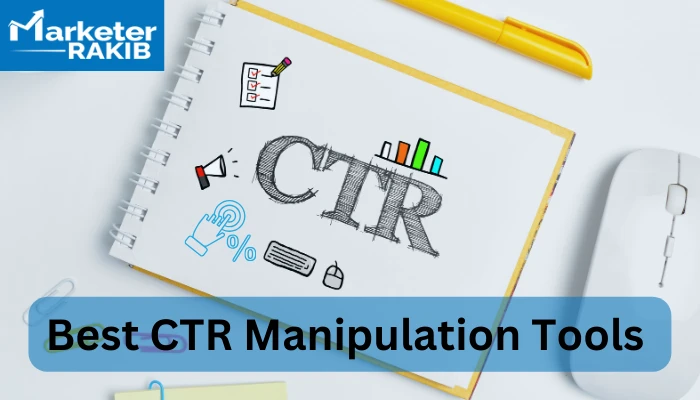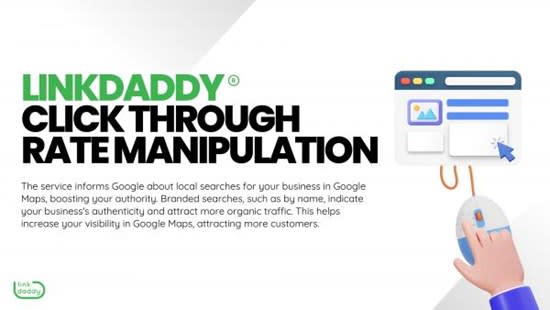Enhance Your SEO Efficiency With Proven CTR Control Methods
Enhancing your Search engine optimization performance with tried and tested CTR adjustment approaches can be a game-changer in today's competitive digital landscape. By checking out the nuances of CTR manipulation, you open up the door to a realm of opportunities that can propel your on the internet existence to brand-new heights.
Understanding CTR Control Basics
Comprehending the basics of CTR adjustment is necessary for executing reliable search engine optimization strategies. Click-through rate (CTR) manipulation includes tactics aimed at enhancing the percentage of individuals who click a particular web link. By comprehending these basics, digital marketing professionals can improve their website's exposure and drive more organic web traffic.
CTR adjustment approaches commonly revolve around optimizing aspects that influence user actions on online search engine result pages (SERPs) Variables such as meta titles, meta descriptions, and abundant fragments play crucial functions in enticing users to click a particular web link - CTR Manipulation Service. Furthermore, components like schema markup, link framework, and site rate can influence CTR
Furthermore, recognizing user intent and crafting web content that reverberates with the target audience is crucial in CTR control. By straightening web content with search questions and customer expectations, sites can attract even more clicks and enhance their general SEO efficiency.
In essence, grasping the basics of CTR manipulation equips digital marketing experts to strategically boost their on-line visibility and drive significant interaction with their target audience.
Crafting Compelling Meta Titles and Summaries
Crafting compelling meta titles and summaries is a critical facet of maximizing search engine presence and driving customer engagement. Meta titles offer as the initial impression of a web page in search outcomes, affecting the click-through price (CTR) considerably. By spending time and initiative right into developing engaging meta titles and summaries, internet site owners can boost their search engine rankings and boost user engagement.
Using Rich Fragments to Stand Out
Rich snippets supply customers with a sneak peek of the material directly on the search engine results page, providing even more details than standard bits. These boosted snippets not only make search results extra aesthetically enticing but likewise give users with a far better understanding of what the web page offers, boosting the chance of bring in appropriate web traffic.
To take advantage of rich bits successfully, internet site owners need to apply structured information markup on their web pages. This markup helps internet search engine recognize the content on the page better, enabling them to show appropriate abundant snippets in the search results. By providing search engines with the required organized information, websites can boost their exposure, attract more clicks, and inevitably enhance their search engine optimization efficiency.

Leveraging Schema Markup for Enhanced Presence
Leveraging schema markup is a powerful technique for enhancing the presence of internet material in internet search engine results. Schema markup allows search engines to much better understand the web content on a website, which can bring about abundant outcomes being shown in the online search engine results pages (SERPs) By implementing schema markup, web sites can offer search engines with additional context concerning their material, such as item details, reviews, occasions, and a lot more.
When search engines like Google can much better analyze the material on a web page, they are more probable to display that content plainly in the search engine result. This enhanced presence can lead to higher click-through Going Here prices (CTRs) and ultimately drive even more natural traffic to the web site. Additionally, schema markup can likewise improve the look of search listings, making them much more aesthetically engaging and appealing to users.

Examining and Enhancing Call-to-Actions
Effective call-to-actions are essential elements of any electronic advertising and marketing method, functioning as the portal to converting internet site visitors right into clients. Testing and enhancing call-to-actions is important for maximizing their influence on click-through rates (CTRs) and conversions. A/B screening various variations of call-to-action switches, message, shades, and placements can supply beneficial insights into what resonates finest with your target market.

Frequently monitoring and examining the efficiency of call-to-actions via data analytics devices is crucial. By tracking metrics such as conversion prices and CTRs, you can refine your call-to-action approaches to constantly boost their efficiency in driving customer involvement and conversions on your web site.
Conclusion
Finally, applying proven CTR control techniques such as maximizing meta titles, utilizing abundant snippets, and leveraging schema markup can significantly enhance SEO efficiency. By concentrating on individual intent and engagement with critical call-to-actions, web sites can enhance their search visibility and click-through prices. Regularly testing and enhancing these aspects will result in greater conversions and a more powerful online visibility.
CTR control techniques commonly revolve around optimizing aspects that affect customer behavior on search engine result pages (SERPs) Meta titles serve as the very first impact of a page in search results, affecting the click-through price (CTR) substantially. Rich fragments offer individuals with a sneak peek of the web content straight on the search engine results page, providing even more details than standard fragments. Schema markup article allows search engines to better recognize the content on a web page, which can lead to abundant outcomes being shown in the search engine results web pages (SERPs)When search engines like Google can better interpret blog the material on a webpage, they are much more most likely to show that web content prominently in the search results.